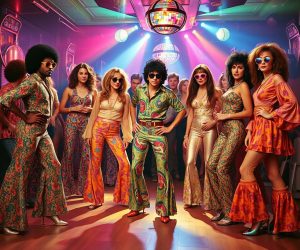
The fusion of fashion trends and gaming has become a powerful force in the modern digital landscape. As gaming evolves beyond simple entertainment, it becomes a canvas for personal expression and creativity, with fashion playing a pivotal role. From virtual avatars to in-game environments, fashion trends are redefining how we experience and engage with virtual gaming platforms.
Fashion influences not only the aesthetics of games but also how players interact and connect with these platforms. Developers and designers are taking cues from real-world fashion to create virtual experiences that are dynamic, immersive, and trend-driven. Platforms such as 1win-australia.com, known for their innovative casino offerings, also reflect the growing trend of blending entertainment with style, offering users experiences that are both engaging and visually appealing.
How fashion trends shape virtual avatars
Avatars serve as a player’s digital identity, and fashion trends play a crucial role in shaping them. Modern gamers demand customization options that reflect current styles, personal preferences, and cultural influences. This has led to the integration of streetwear, high-fashion brands, and even seasonal collections into gaming wardrobes.
Games like Fortnite and The Sims have set benchmarks by collaborating with fashion brands such as Balenciaga and Gucci. These partnerships bring runway-inspired designs into the digital realm, offering players exclusive items to enhance their avatars. Virtual events like fashion shows and brand-sponsored collaborations further deepen this integration, making fashion a key driver of player engagement.
Moreover, the rise of virtual try-ons and augmented reality in gaming allows players to experiment with trends before committing to purchases. This symbiotic relationship between gaming and fashion not only boosts in-game purchases but also sets the stage for a new era of consumer behavior.
Impact of fashion on gaming environments
Beyond avatars, fashion trends influence the design of virtual gaming environments. Designers are drawing inspiration from the latest color palettes, textures, and architectural styles to craft immersive worlds that mirror real-world trends. From minimalist, monochromatic spaces to vibrant, eclectic settings, gaming environments reflect the ever-changing landscape of global fashion.
Seasonal updates in games often mirror fashion’s cyclical nature, offering players new worlds and challenges that align with current trends. For instance, winter-themed updates might feature cozy, Scandinavian-inspired designs, while summer expansions may embrace bold, tropical aesthetics.
This connection extends to gamified shopping experiences. Platforms like Zepeto and Roblox have turned gaming environments into virtual malls where players can explore, try, and purchase fashion items. Such innovations are blurring the lines between gaming, shopping, and fashion, creating a unique ecosystem where creativity and commerce intersect.
The future of fashion and gaming
As technology advances, the relationship between fashion trends and virtual gaming platforms will only deepen. With the rise of the metaverse and blockchain technology, digital fashion is set to become a valuable asset. Non-fungible tokens (NFTs) and decentralized marketplaces are paving the way for players to own and trade unique fashion items, giving virtual gaming a new layer of economic significance.
The blending of fashion and gaming reflects the growing importance of self-expression in digital spaces. Developers, designers, and fashion brands must continue to collaborate and innovate to keep up with this demand, ensuring that virtual worlds remain as stylish and engaging as their real-world counterparts.










